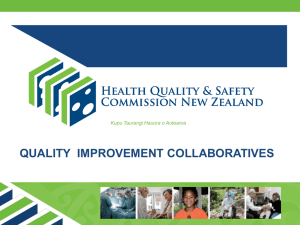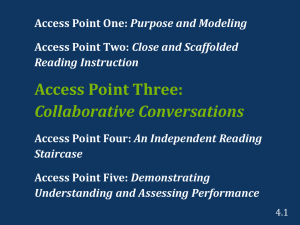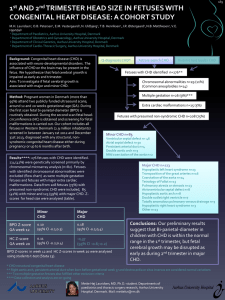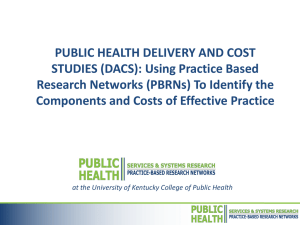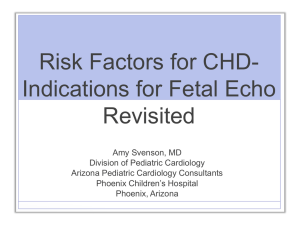Developing & Managing QI Learning Collaboratives
advertisement
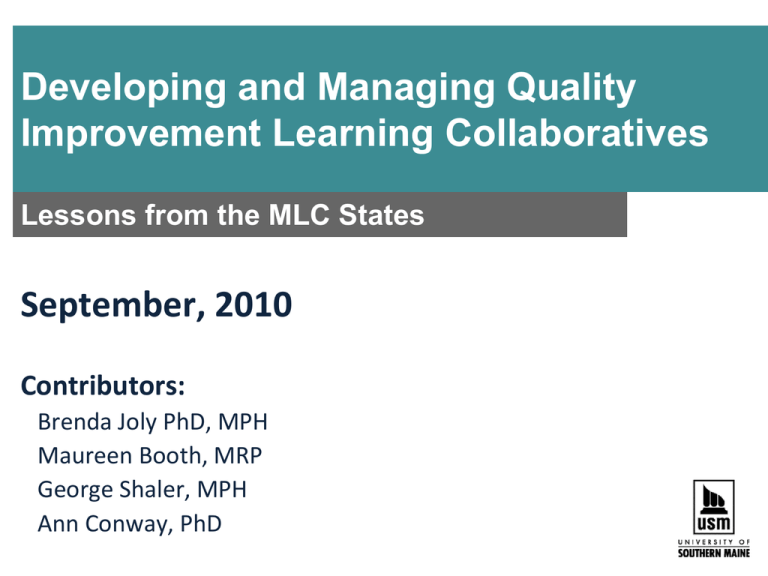
Developing and Managing Quality Improvement Learning Collaboratives Lessons from the MLC States September, 2010 Contributors: Brenda Joly PhD, MPH Maureen Booth, MRP George Shaler, MPH Ann Conway, PhD Overview • Evaluation background – Components – Case study process, rationale, theory • Findings and opportunities – Planning and start-up – Managing the Learning Collaborative • Implications – Sponsors – Local health departments MLC Evaluation • Quality improvement goal: – To promote the application of QI methods • Evaluation tools: – Annual survey – Mini-Collaborative survey – Quarterly reports – Case studies – Key informant interviews Case Studies • Who? – Mini-collaborative members and organizers – LHD quality improvement teams • Why? – Multiple perspectives – “On-the-ground” understanding • What? – Site visits, interviews, document review – Observations of meetings Literature-Based Theory Cohesive Team Sufficient Time Productive Meetings Strong Facilitators & Content Experts Clear Expectations Case Study Theory Resources Provided to Agencies Sufficient Training and TA Successful MiniCollaboratives Member Motivation and Engagement Work Plan in Place and Used Use of an Improvement Model Senior Leader Commitment Available Evidence and Best Practices Planning and Start-Up Key Finding #1: The Relevance of a Target Area is Critical and Impacts Engagement • Who selected targets? – State sponsors or statewide body – Local input • What criteria were use in selection? – Relevance and alignment with priorities – Need demonstrated by data Key Finding #2: The Structure of a Mini-Collaborative Affects its Effectiveness • What works best? – Involving senior leadership is essential – Having diversity in faculty adds value – Having a sufficient size to promote exchange – Working on a consistent QI project – Having clear roles and responsibilities – Having prior experience working together Key Finding #3: Defining Expectations & Communicating Them in Advance Builds Confidence • What did we learn? – Goals of mini-collaboratives varied and evolved • Build QI skills • Improve quality within target area – Goals should be aligned with timeframe and participant readiness – Expectations for QI projects should be focused, realistic and communicated Key Finding #4: Advanced Planning Influences the Effectiveness of Learning Collaboratives • Who planned the mini-collaboratives? – State sponsors – Broader group of state, faculty and others • What should be planned? – Model, curriculum, workplan, use of faculty and evidence, tools to assess participant knowledge and measures to monitor progress Key Finding #5: The Level of Effort Among Sponsors and LHDs is Often Underestimated • What did we learn? – The planning and start-up phase is especially time consuming for sponsors – Having outside faculty helps – Level of effort is often underestimated if expectations are unclear or scope is unrealistic – Competing priorities are a reality Managing the Learning Collaborative Key Finding #1: Opportunities for Timely and Frequent Application of QI Tools are Essential • What was most helpful? – Learning/using fewer tools – Training on when and how to use – Providing opportunity for immediate application – Providing feedback on use – Giving LHDs a chance to practice, practice, practice Key Finding #2: Communication With and Among Members Enhances Learning Experience • What was most helpful? – Opportunities for ongoing information exchange – In-person meetings – Structured learning sessions – Communicating the value of QI to LHDs – Site visits to LHDs – Communicating clear expectations Key Finding #3: Several Factors May Strengthen or Impede a QI Learning Collaborative • Facilitating factors? – Commitment to data driven QI and accreditation – Leadership buy-in • Impeding factors? – Concurrent QI skill development at state and local level – Lack of focus and clear expectations, unrealistic goals, turnover, and competing priorities Key Finding #4: It is Critical for Participants to Have Access to Adequate Resources • Technical assistance: – There should be a good mix of content expertise and QI expertise among sponsors and faculty • Other resources: – Evidence needed to select QI intervention should be made available – Financial resources may boost efforts of LHDs Implications for Sponsors • Some considerations… – Set time aside for advance planning – Recruit credible and skilled faculty – Assess QI knowledge beforehand – Recruit the enough and the right mix of participants – Embed the application of QI into the process – Communicate with the group frequently – Follow a structured approach Implications for LHDs • Some considerations… – Garner support of leadership and staff – Promote the value of QI – Align QI project with job responsibilities – Actively engage in information exchange – Use faculty and available technical assistance – Remain open to the process and outcomes – Document your efforts – Share your findings Developing and Managing a Quality Improvement Learning Collaborative Lessons from Florida September 2010 Contributors: Cathy Montgomery, M.S., ASQ-CQIA Sandra Ruzycki, M.P.H., Quad-R Baker, Clay, DeSoto, Duval, Glades, Martin, Nassau, St. Johns and St. Lucie County Health Departments Planning and Start-Up Plan, Plan, Plan • Use data to determine target area – Overweight and obesity among children 6-19 • Create partnerships • Outline timeframes and expectations Ψ • Establish criteria for selecting participants Ψ = lesson learned Use Criteria Childhood Obesity Mini-Collaborative Establish (facilitator) Goals • Use of quality improvement tools and methods • Support participants in their projects • Communicate project impacts and outcomes – Local, state, national venues Select an Improvement Model • Quality Improvement Control Story Ψ – Founded on PDCA • Integrates QI tools and methods throughout the process Training and Tools • Assess participant’s knowledge of QI tools Ψ • Provide relevant training – Just-in-time – Face-to-face Ψ • Allow participants to practice using tools and process Results: Training • Participation in QI training improved overall knowledge of QI tools – 84% – Baseline = 84% • Confident in their ability to use QI tools – 68% – Baseline = 62% • % of participants that rated level of use of QI tools after training as: moderate – 58% – Baseline = 62% high – 21% – Baseline = 15% *Surveys conducted March 2009 (baseline) and February 2010 Results: Tools % of participants that indicated a high readiness to: • Use QI tools in other initiatives – 83% (n = 15) • Incorporate QI tools into ongoing work – 67% (n=12) • Development of evaluation measures – 56% (n = 10) • Present QI tools to CHD staff – 50% (n=8) Ψ Technical Assistance • Conduct coaching calls – – – – Using quality improvement process and tools Creating action plans and storyboards Developing methods and measures for evaluation Analyzing data results • Resources – Subject matter expertise – Books, articles, and research related to QI and projects – Evaluation database Evaluation Database Managing the Learning Collaborative Collaborative Teams • Counties created teams consisting of internal staff – 65% of participants indicated multiple CHD programs were represented on team – 3 of 9 counties had QI program staff on the team Results: Collaborative Teams • Team meetings were random and unproductive Ψ – 53% of participants stated team meetings were only slightly productive – 53% moderately or slightly agreed there was consensus on project goals and procedures • % of participants that strongly or moderately agreed project team members: – Got along well – 94% – Treated each other fairly – 71% – Had necessary skills for this project – 65% Results: CHD Support • 59% rated level of CHD support was very or somewhat supportive • 71% indicated staff time and resources were fully, mostly or somewhat available Communication • Provide venues for participants to share ideas – Monthly conference calls/web ex – Face-to-face meetings – SharePoint site • Conduct one-on-one coaching calls • Communicate progress of collaborative projects Ψ Results: Communication • % of participants who rated the following resources as useful – – – – – One-on-one coaching calls: 65% Monthly conference calls: 65% SharePoint site: 59% Collaborating with other MCLC counties: 71% Collaborating with other agencies: 53% Ψ • % of participants who agreed or strongly agreed HPI provided: – Effective communication: 94% – Effective project coordination: 95% Overall Experience • 76% rated their overall experience as excellent or good • 94% rated the level of success of their project as excellent or good • 88% indicated they were likely to participate on another learning collaborative • 76% reported they were likely to implement a new QI project in their CHD Lessons Learned Ψ What else did we learn? • Planning and implementation is time consuming – 41.2% of participants spend 1-5 hours per week on project; others indicated they spend more time! • Don’t assume what they know • Competing priorities are a reality





